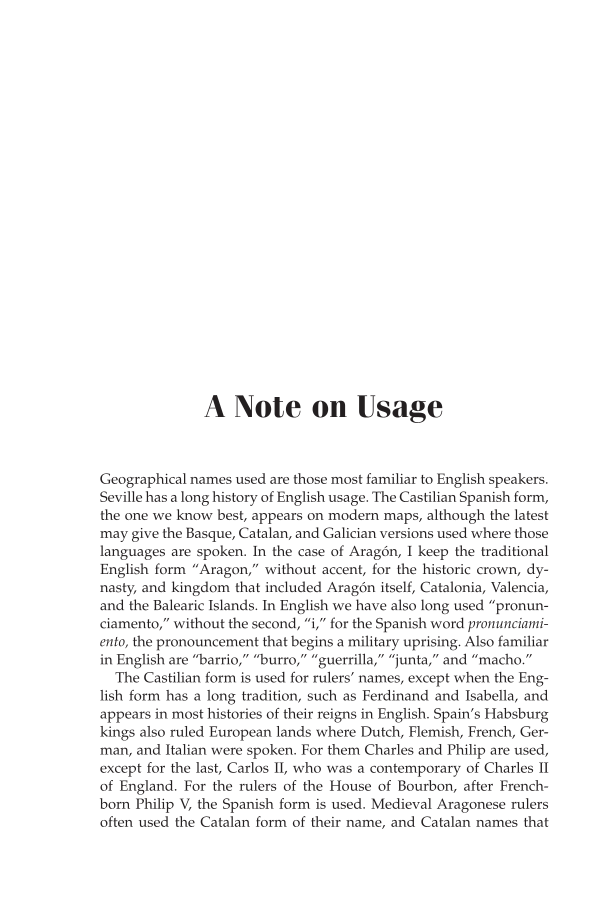A Note on Usage Geographical names used are those most familiar to English speakers. Seville has a long history of English usage. The Castilian Spanish form, the one we know best, appears on modern maps, although the latest may give the Basque, Catalan, and Galician versions used where those languages are spoken. In the case of Aragón, I keep the traditional English form “Aragon,” without accent, for the historic crown, dy- nasty, and kingdom that included Aragón itself, Catalonia, Valencia, and the Balearic Islands. In English we have also long used “pronun- ciamento,” without the second, “i,” for the Spanish word pronunciami- ento, the pronouncement that begins a military uprising. Also familiar in English are “barrio,” “burro,” “guerrilla,” “junta,” and “macho.” The Castilian form is used for rulers’ names, except when the Eng- lish form has a long tradition, such as Ferdinand and Isabella, and appears in most histories of their reigns in English. Spain’s Habsburg kings also ruled European lands where Dutch, Flemish, French, Ger- man, and Italian were spoken. For them Charles and Philip are used, except for the last, Carlos II, who was a contemporary of Charles II of England. For the rulers of the House of Bourbon, after French- born Philip V, the Spanish form is used. Medieval Aragonese rulers often used the Catalan form of their name, and Catalan names that
Document Details My Account Print multiple pages
Print
You have printed 0 times in the last 24 hours.
Your print count will reset on at .
You may print 0 more time(s) before then.
You may print a maximum of 0 pages at a time.































































































































































































































































































